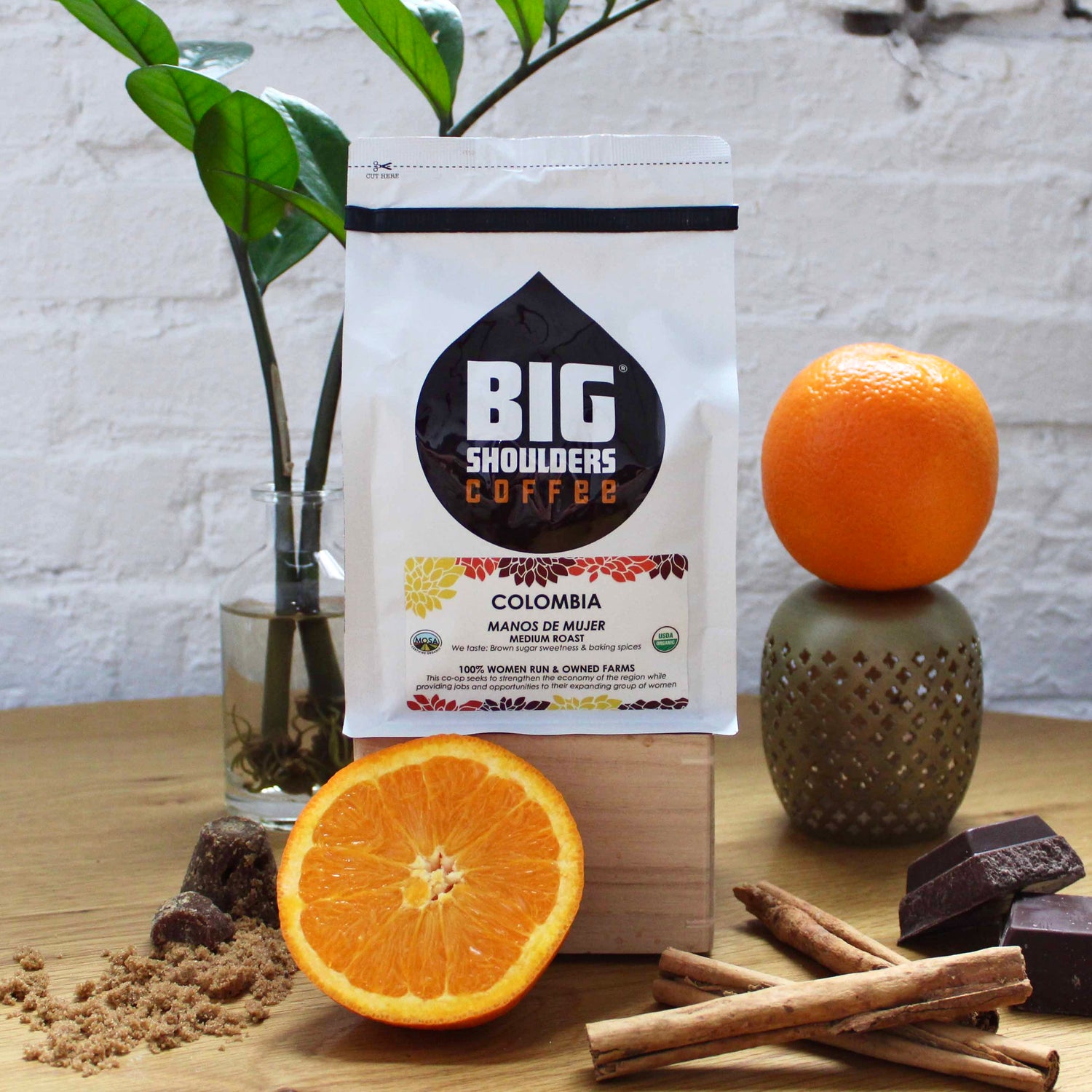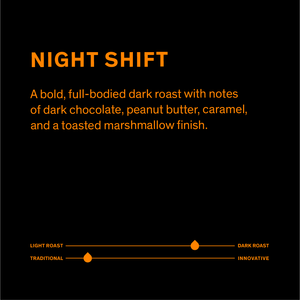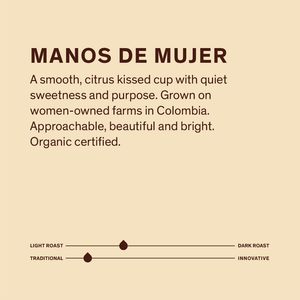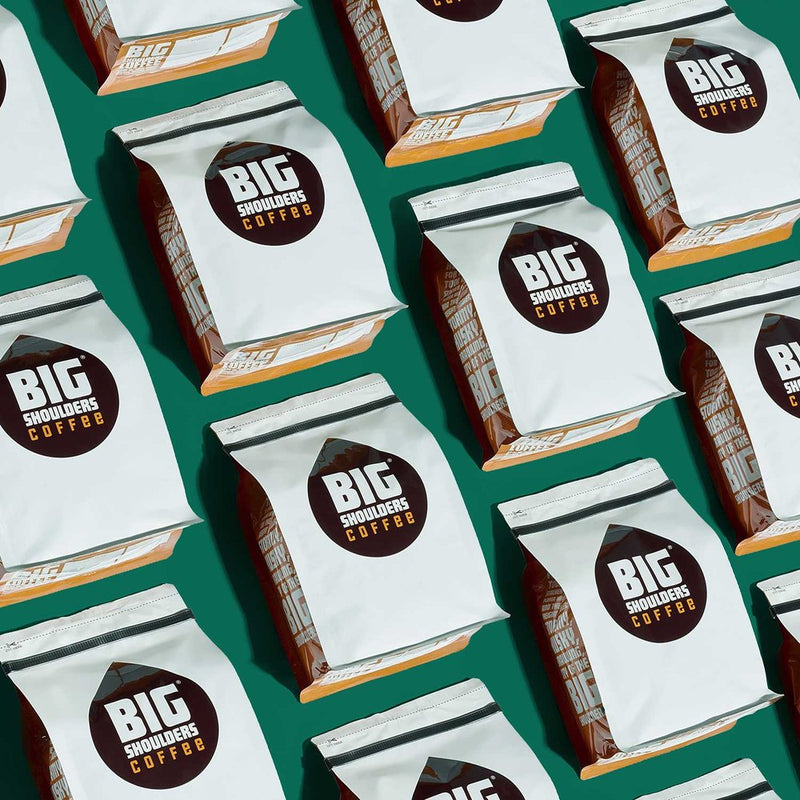
Coffee 101
Factors In Successful Home Brewing
-

The Grind Size
The grind size is an important factor in brewing. This will determine how much of the profile is extracted from the coffee & when. Grind size can change based on brewing device as well as each type of coffee.
-

Water Temperature
When brewing coffee, your ideal brewing temperature should be between 198°F – 202°
-

Coffee : Water
The ratio of coffee and water is typically 1:17 and 1:16 with any brewing methiod, at home.
1:15 Chemex
1:16 V60, Aeropress, Kalita, French Press
1:17 Automatic Drip
-

The Grinder
Having a good grinder at home is key to having a successful extraction. A burr grinder is often times thought of as being more consistent in grinding coffee, while a blade grinder will create different sized grinds during a single pulse.
Most companies will provide their suggested grind setting for each brewing device
Brewing 101
-

Drip Coffee
First Find your grind setting.
Second Dose per brewing device
EX: Drip coffee is typically 1:17, so 10 cups of water is 5.6 tablespoons of coffee.
Third Fill your water reservoir
Fourth Hit Brew & Enjoy! -

The v60
First Find your grind setting
Second Dose for 1:16 ratio
PSST: This brewing method will be 1:16, so 31 grams of coffee will require 485 grams of water.
Third Heat your water
Fourth Wet your grounds to twice the weight of the dose, and wait 45 seconds. This is your bloom time.
Fifth Pour the water in increments of 100 grams. When you begin to see grounds "surface" - continue to pour.
Sixth Allow to drain entirely, Pour & Enjoy! -

The Chemex
First Find your grind setting
Second Dose for 1:15 ratio
PSST: You can use the same 31 grams of coffee & 485 grams of water here!
Third Heat your water
Fourth Wet your grounds to twice the weight of the dose & wait 45 seconds. This is your bloom time.
Fifth Pour the water in increments of 100 grams. When you begin to see grounds "surface" - continue to pour.
Sixth Allow to drain entirely, Pour & Enjoy! -

The French Press
First Find your grind setting
Second Dose for 1:16 ratio
PSST: You can use the same 31 grams of coffee & 485 grams of water here!
Third Heat your water
Fourth Slowly wet your grounds until fully saturated, then pour to 500 grams.
Fifth Set your timer for 4 minutes
Sixth Plunge, Pour & Enjoy!
How To Talk Coffee
Bitter
When too much water is added to your coffee or espresso, it typically results in bitter notes.
This is most common with washed coffees & can be identified with notes such as wood, smoke, salty, musty & even paper.
Understanding your brewing ratio is important & balance is key
Degassing
A natural process of coffee expelling carbon dioxide.
This is often times referred to as the developmental period after roasting.
Natural Coffee
Natural process,(dry process, unwashed, or natural sundried all refer to the same method of processing) that involves drying the coffee with their cherries either patios or raised beds in the sun.
This process, which can take 3-6 weeks normally, is the more-traditional method of processing coffee. This method will give the coffees a more fruit forward note.
Single Origin
Single-origin coffee is coffee grown within a single known geographic origin. Single-origins can offer unique characteristics and specific tastes VS. a blend that consists of multiple origins with harder to identify notes.
Expiration Date
Expiration dates are not real nor are they faux when speaking in terms of coffee.
Coffee is a living, breathing consumable that simply loses it’s flavor over time.
With every coffee, there is a different roasting processing, degassing period, and drying time. The drying time is the period of time that the coffee is exposed to oxygen. When exposed to oxygen- the oil will begin to strip and quite literally… dry out.
Ways to extend your coffees life:
- Keep whole been & grind as needed
- Store in a air tight container that is not see through material.
- Try a natural coffee. Their development period is longer & perfect for drinking after 6-7 days. These coffees can last up to 6 month because of their drying process.
Pour Over
A brewing method that involves manually pouring hot water over coffee grounds. These methods help you bring out or balance what you desire our of your coffee.
Popular pour overs are Chemex, Kalita Wave, V60, Clever Cup
Acidic
This is a word used commonly when folks find an unpleasant note in their coffee. However; we use this term to identify rather citrusy notes such as lemon, lime, orange & even grapefruit.
A common coffee with a heavy note of acidity is a Costa Rican. This is punchy and full of lemon.
Washed Coffee
This coffee is washed, the fermented. This is to promote the separation of the fruit from the coffee bean. It is the air dried on traditional beds.













